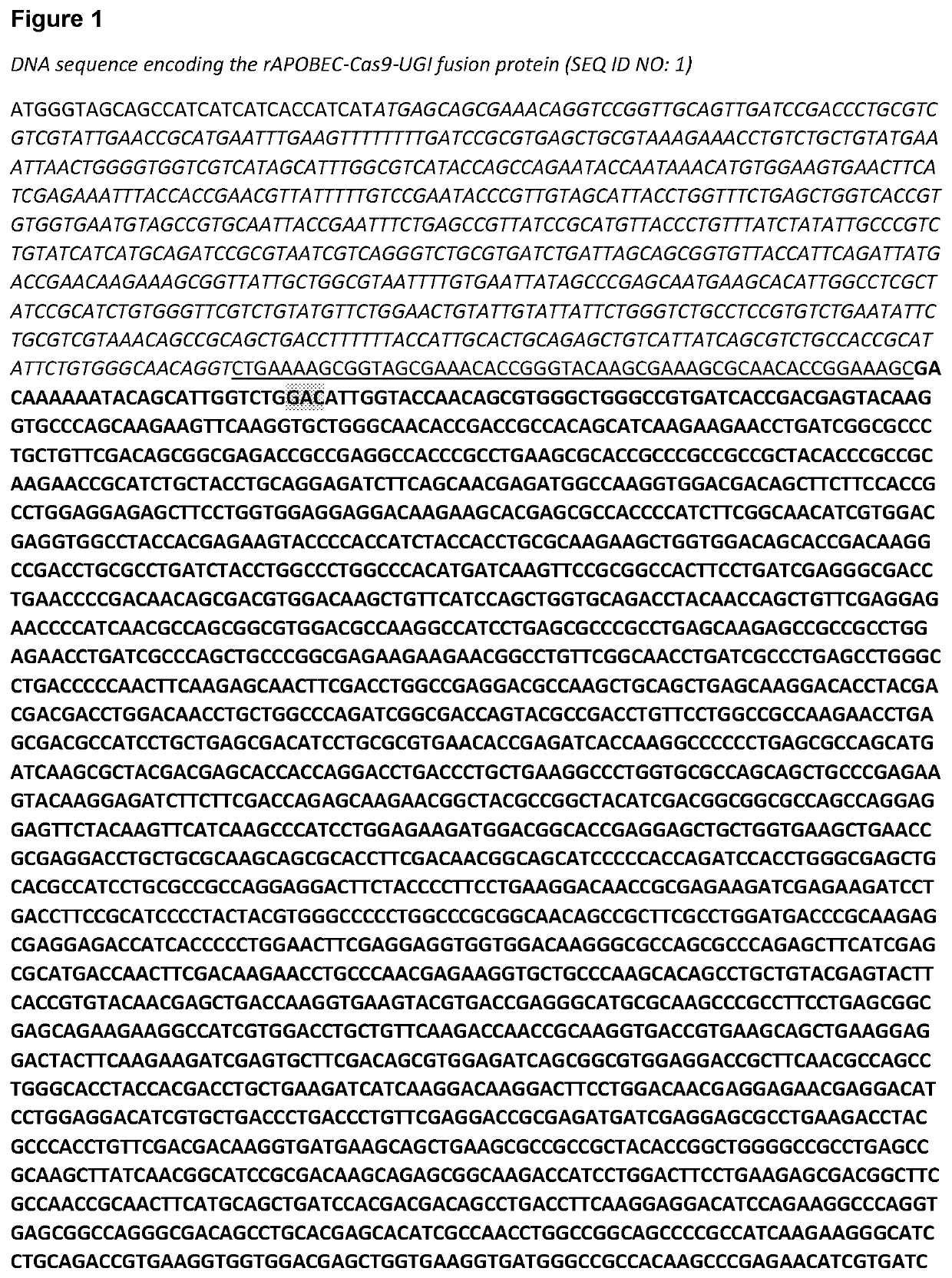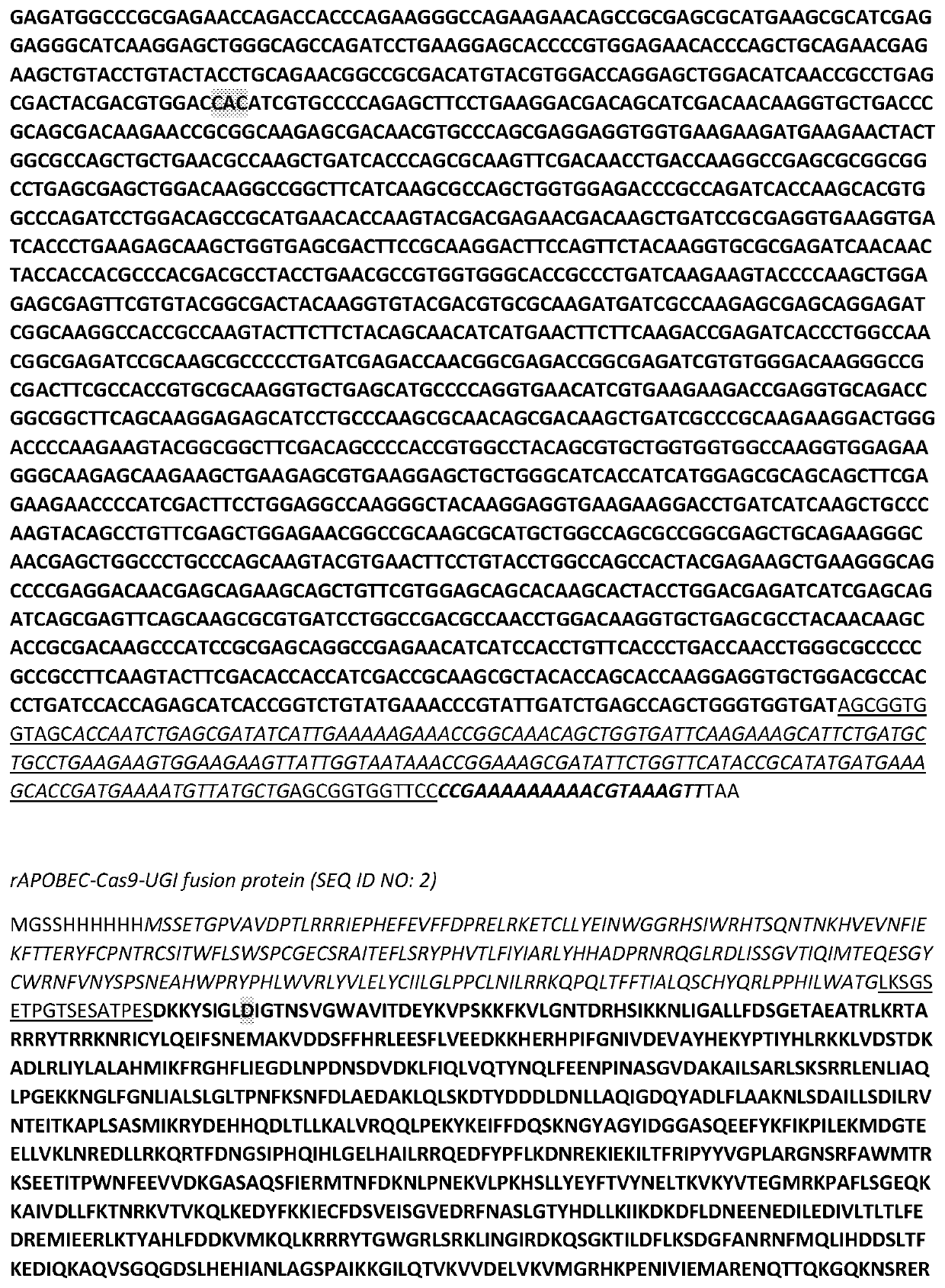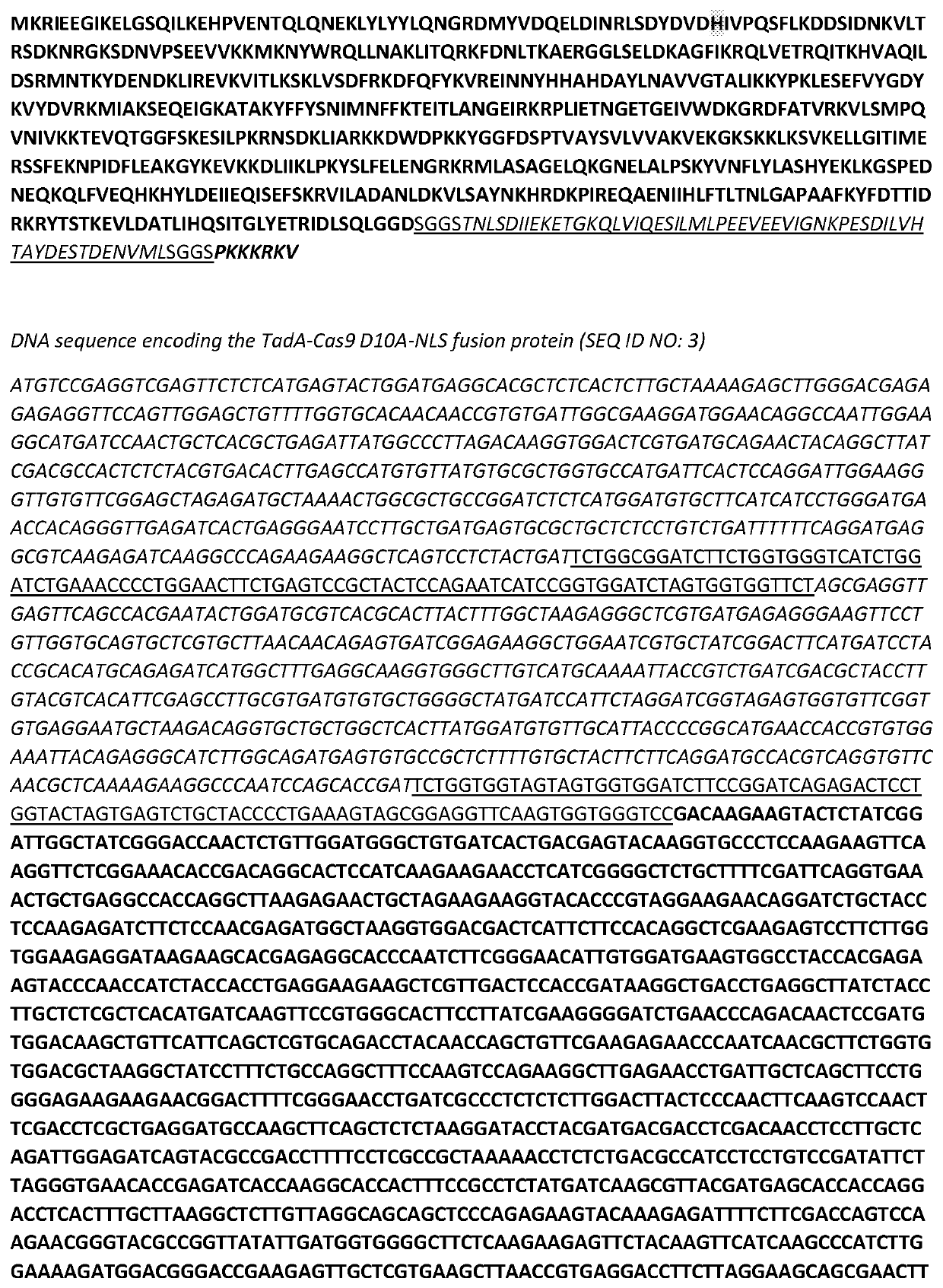Methods of targeted genetic alteration in plant cells
- Summary
- Abstract
- Description
- Claims
- Application Information
AI Technical Summary
Benefits of technology
Problems solved by technology
Method used
Image
Examples
example 1
Programmable Editing of a Target Base at the Lin5 Locus in Plant Cells
[0147]Constructs
[0148]A construct comprised of three components, the rat APOBEC deaminase (rAPOBEC1), the Cas9 protein and the UDP-uracil glycosylase inhibitor protein UGI were assembled to create a fusion protein. The rAPOBEC1 sequence was codon optimized for expression in Solanum species and flanked by NcoI / KpnI sites for cloning at the N terminus of Cas9. A 6× His tag was also introduced to the 5′ end of this sequence. The UGI sequence was also codon optimized for Solanum species and synthesized together with a nuclear localization signal (NLS) and flanked by AgeI / XhoI sites. A vector containing the Cas9 ORF (pET28::Cas9) was then digested with the enzymes NcoI and XhoI for isolation of the vector backbone and with KpnI / AgeI to isolate a fragment of the Cas9 ORF. The rAPOBEC1, Cas9, UGI-NLS and vector fragments were then combined in a single ligation and clones consisting of all the fragments were isolated, giv...
example 2
Use of Targeted Deaminases to Introduce Herbicide Resistance in Plants
[0169]Tomato contains two copies of the gene acetolactate synthase (ALS1 and ALS2) whose protein is a target for a wide range of herbicides. Specific amino acid changes at the ALS2 positions P184 and S640, and also at the corresponding amino acids in the ALS1 protein (P186 and S642), generate proteins that are resistant to the activity of the herbicide and plant cells expressing such proteins survive herbicide application. Mutations at the both the P184 and S640 codons are dominant and can be selected for at both the single cell and the plant level. We reasoned that the rAPOBEC1-Cas9 D10A-UGI-NLS protein could be targeted to these codons in protoplasts, generating mutations that would confer herbicide resistance. Addition of the herbicide to the protoplast growth medium would select protoplasts that contained C to T transitions in and around the P184 and S640 codons and herbicide resistant calli would then be gene...
PUM
 Login to View More
Login to View More Abstract
Description
Claims
Application Information
 Login to View More
Login to View More - R&D
- Intellectual Property
- Life Sciences
- Materials
- Tech Scout
- Unparalleled Data Quality
- Higher Quality Content
- 60% Fewer Hallucinations
Browse by: Latest US Patents, China's latest patents, Technical Efficacy Thesaurus, Application Domain, Technology Topic, Popular Technical Reports.
© 2025 PatSnap. All rights reserved.Legal|Privacy policy|Modern Slavery Act Transparency Statement|Sitemap|About US| Contact US: help@patsnap.com



